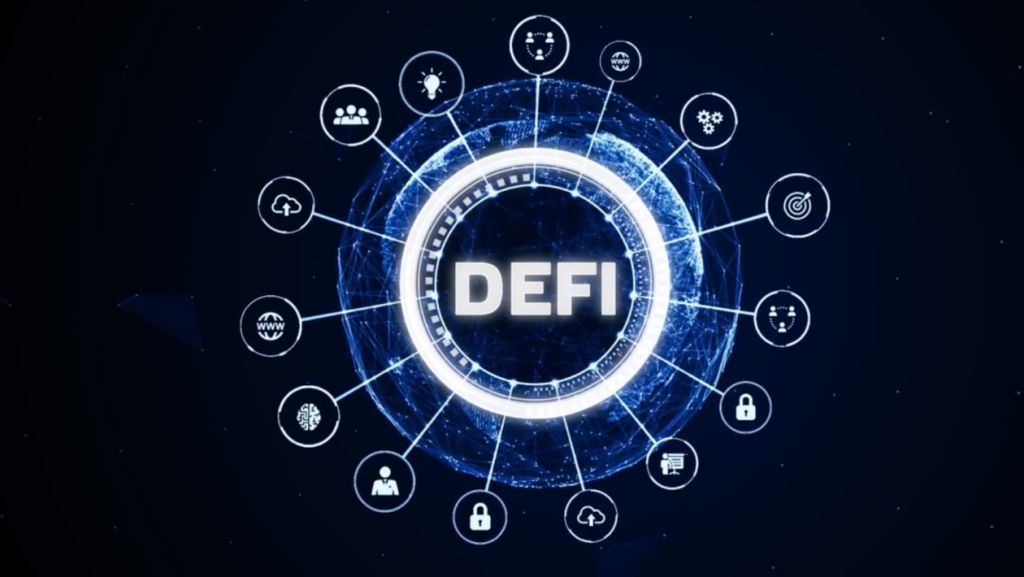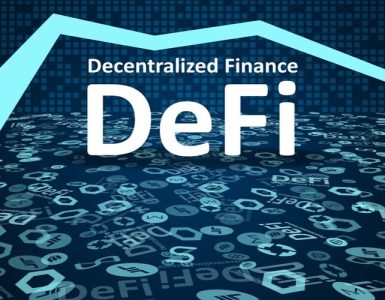What are Cross-Chain Bridges?
Cross-chain bridges are technological solutions that enable the seamless transfer of digital assets between different blockchain networks. In the decentralized finance (DeFi) ecosystem, where various blockchain platforms coexist, cross-chain bridges play a crucial role in facilitating interoperability and enhancing liquidity across different networks.
Cross-chain bridges serve as connectors between blockchains, allowing users to transfer assets from one chain to another without the need for intermediaries or centralized exchanges. This capability opens up a world of possibilities for decentralized applications (DApps) and smart contracts, as they can leverage assets and functionalities from multiple chains.
How do Cross-Chain Bridges Work?
Cross-chain bridges utilize a combination of cryptographic techniques and smart contracts to facilitate the secure and transparent transfer of assets across different blockchains. The process typically involves locking the assets on the source chain, generating a representation of the locked assets on the destination chain, and then unlocking the assets based on the proof of ownership.
To achieve this, cross-chain bridge protocols employ various consensus mechanisms, such as threshold signatures, multi-signatures, or other cryptographic proofs, to ensure the integrity and security of the asset transfers. Smart contracts act as the bridge’s backbone, governing the locking and unlocking of assets, verifying transactions, and maintaining the overall integrity of the bridge operation.
The Significance of DeFi Cross-Chain Bridges

DeFi cross-chain bridges hold immense significance in the rapidly evolving landscape of decentralized finance. They address the issue of blockchain fragmentation, allowing users to access a broader range of assets and services across multiple chains. Here are some key reasons why cross-chain bridges are significant:
- Enhanced Liquidity: Cross-chain bridges enable liquidity to flow freely between different blockchain networks, enhancing the overall liquidity pool available for DeFi applications. This increased liquidity translates into more opportunities for yield farming, lending, borrowing, and other financial activities.
- Asset Portability: With cross-chain bridges, users can transfer their assets across different chains, unlocking new possibilities for asset management and investment strategies. This portability enables users to explore diverse DeFi ecosystems and take advantage of specific features or opportunities offered by different chains.
- Risk Mitigation: By allowing asset diversification across multiple chains, cross-chain bridges help mitigate the risk of smart contract vulnerabilities or network failures on a single blockchain. If one chain experiences an issue, users can quickly move their assets to another chain, reducing potential losses.
- Expansion of DeFi Ecosystem: Cross-chain bridges promote the growth and expansion of the DeFi ecosystem by fostering collaboration between different blockchain communities. This collaboration encourages developers to build interoperable applications that leverage the strengths of multiple chains, leading to innovative solutions and increased user adoption.
Challenges and Limitations of Cross-Chain Bridges
While cross-chain bridges offer immense potential, they also face several challenges and limitations that need to be addressed for widespread adoption and optimal functionality. Some of these challenges include:
- Security Risks: Cross-chain bridges introduce additional attack vectors that malicious actors can exploit. The secure design and implementation of these bridges are of paramount importance to protect users’ assets and maintain the integrity of the connected blockchains.
- Scalability: As more blockchain networks emerge and gain popularity, the scalability of cross-chain bridges becomes a critical concern. The ability to handle a high volume of asset transfers across multiple chains is essential to avoid congestion and maintain optimal performance.
- Protocol Compatibility: Different blockchain networks often have varying protocols and standards, making it challenging to establish seamless interoperability. Standardization efforts and cross-chain protocols that can work across multiple chains are necessary to overcome this limitation.
- User Experience: The user experience of interacting with cross-chain bridges should be intuitive and user-friendly to encourage broader adoption. Simplified processes, clear instructions, and well-designed interfaces can help users navigate the complexities of cross-chain asset transfers.
Interoperability in DeFi: A Game-Changer
Interoperability is a game-changer for the DeFi ecosystem, as it allows for the integration and interaction of various blockchain networks and their respective assets. By breaking down the silos between blockchains, interoperability enables the seamless transfer of value, data, and functionality, opening up new avenues for innovation and collaboration.
DeFi applications can leverage interoperability to access liquidity from multiple chains, combine the strengths of different platforms, and create unique value propositions for users. This interoperability also fosters cross-chain composability, where different DeFi protocols can be combined to create more complex and sophisticated financial instruments.
Exploring Popular Cross-Chain Bridge Protocols
Several cross-chain bridge protocols have gained popularity in the DeFi space, each offering its unique approach to achieving interoperability. Some notable protocols include:
- Polygon Bridge: Polygon Bridge, powered by the Polygon (formerly Matic) network, enables the transfer of assets between Ethereum and Polygon chains. It provides a user-friendly interface and low-cost transactions, making it a popular choice for bridging assets between the two chains.
- Chainlink: Chainlink utilizes its oracle network to provide secure and reliable data transfers between blockchains. It enables the creation of decentralized oracles that bridge smart contracts to external data sources, facilitating cross-chain communication.
- Wrapped Bitcoin (WBTC): WBTC is an ERC-20 token pegged to the value of Bitcoin. It allows Bitcoin holders to bring their assets to the Ethereum network, where they can participate in DeFi applications and benefit from the Ethereum ecosystem.
The Future of Cross-Chain Bridges in DeFi
The future of cross-chain bridges in DeFi is promising, as the demand for seamless interoperability continues to grow. Developers and researchers are actively working on improving the scalability, security, and usability of cross-chain bridge protocols.
As blockchain technology evolves, we can expect to see more standardized cross-chain protocols that can seamlessly connect different chains, creating a unified DeFi ecosystem. The development of layer-2 solutions, such as sidechains and state channels, will further enhance cross-chain capabilities, enabling faster and more cost-effective asset transfers.
In the coming years, cross-chain bridges will likely become an integral part of the DeFi infrastructure, empowering users with unparalleled access to diverse assets and expanding the possibilities for decentralized financial innovation.
Exploring the Benefits of Cross-Chain Bridges
Cross-chain bridges offer a range of benefits that contribute to the growth and development of the DeFi ecosystem. Let’s delve into some key advantages:
- Increased Market Accessibility: Cross-chain bridges enable users to access assets and services from multiple blockchain networks. This accessibility expands investment opportunities, allowing users to tap into the potential of various markets and ecosystems.
- Diversification of Investment Strategies: By utilizing cross-chain bridges, investors can diversify their portfolios across different blockchains. This diversification reduces the reliance on a single blockchain’s performance and minimizes the associated risks.
- Easier Asset Swaps: Cross-chain bridges facilitate seamless asset swaps between different chains. This functionality eliminates the need for multiple transactions and transfers, making the process more efficient and cost-effective for users.
- Arbitrage Opportunities: Cross-chain bridges create arbitrage opportunities by bridging liquidity across multiple chains. Traders can take advantage of price discrepancies and imbalances between different markets, potentially maximizing their profits.
- Ecosystem Collaboration: Cross-chain bridges encourage collaboration between blockchain networks and communities. Developers can leverage the strengths of different chains to build more robust and feature-rich applications, fostering innovation and progress in the DeFi space.
Overcoming Challenges in Cross-Chain Bridges
While cross-chain bridges hold significant promise, they face several challenges that need to be addressed for widespread adoption and optimal functionality. Let’s explore these challenges in more detail:
- Security and Trust: Establishing trust and maintaining security are critical aspects of cross-chain bridges. Robust security measures, thorough audits, and transparent governance structures are essential to mitigate the risks associated with asset transfers across different chains.
- Interoperability Standards: Lack of interoperability standards across different blockchains poses a challenge to seamless cross-chain communication. Establishing common protocols, data formats, and consensus mechanisms can facilitate interoperability and enhance the overall user experience.
- Scalability and Throughput: As the number of users and transactions increases, scalability becomes a concern for cross-chain bridges. Scaling solutions, such as layer-2 technologies and sharding, need to be explored and implemented to ensure that cross-chain bridges can handle the growing demand.
- User Experience and Education: Cross-chain bridges need to prioritize user experience and educate users on the benefits and risks associated with using these bridges. Intuitive interfaces, clear instructions, and educational resources can help users navigate the complexities of cross-chain asset transfers.
The Role of Governance in Cross-Chain Bridges
Governance plays a crucial role in the development and operation of cross-chain bridges. Effective governance ensures transparency, security, and the alignment of interests among stakeholders. Here are key aspects of governance in cross-chain bridges:
- Decentralized Governance Models: Many cross-chain bridges employ decentralized governance models where token holders can participate in decision-making processes. This democratic approach ensures that the bridge’s future development and upgrades align with the community’s interests.
- Proposal and Voting Mechanisms: Governance in cross-chain bridges often involves the submission and voting on proposals. Token holders can propose changes, upgrades, or adjustments to the bridge’s parameters, and the community votes to determine their implementation.
- Auditing and Security: Governance also encompasses security audits and risk management. Regular audits and security assessments help identify vulnerabilities and ensure that the bridge’s infrastructure remains robust and secure.
Conclusion
In conclusion, cross-chain bridges are revolutionizing the DeFi landscape by enabling seamless asset transfers between different blockchain networks. These bridges enhance liquidity, promote interoperability, and foster collaboration within the decentralized finance ecosystem.




